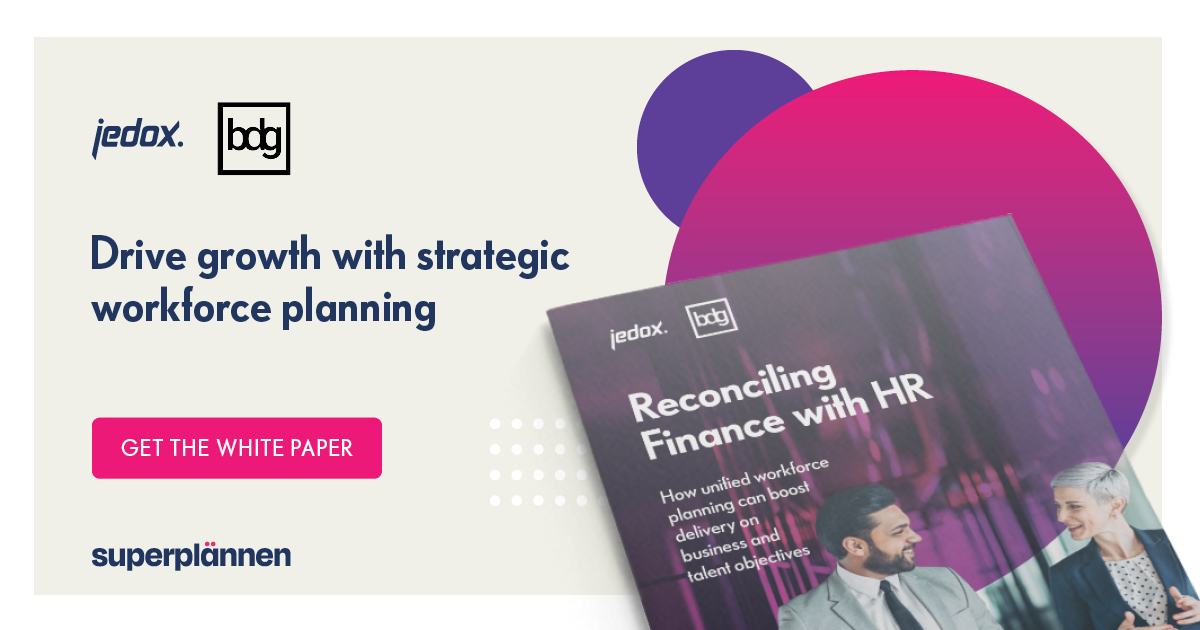
6 ways strategic workforce planning drives long-term value
Talent is out there, but it is hard to attract and retain. When focusing on growth ambitions, organizations must consider the variables that affect hiring and deploying a high-performing workforce, including economic uncertainty, talent shortages, and hybridized workplaces. For example, according to the EY 2022 Work Reimagined Survey, 80% of employees prefer to work remotely at least two days per week.1
As organizations emerge from the COVID-19 pandemic and forge the workplace of the future, the employee life cycle has become more dynamic than ever. As a result, the majority of human resources (HR) leaders say organizational design and change management is a top priority,2 and 78% of organizations are redesigning their existing processes or reimagining the work itself to create a future workplace where workers can thrive.3
In these evolving conditions, integrated business planning (IBP) is gaining momentum because it has the power to unify all the data that matters across finance, HR, and sales into a single platform to drive decisive workforce planning.
A framework powered by a planning and performance management platform can help organizations develop a unified workforce plan that serves the needs of four key stakeholders, including executive management, department heads, HR, and finance. Workforce planning begins with assessing the current state of the organization’s workforce by asking foundational questions:
- How does our organization need to be built in the future?
- Does HR understand our workforce’s current capabilities and talents, and how they can be leveraged so that teams can work together efficiently?
- What skills and capabilities does our organization need to fulfill our strategy and successfully navigate the next five years?
- How fast can we ensure our teams are fully staffed and skilled?
- Are we able to build and cultivate high-performing teams?
- How can we achieve our diversity, equity, and inclusion (DEI) goals?
What is workforce planning?
Workforce planning is the process of integrating data from HR, finance, and other departments to hire, maintain, and grow teams that power thriving organizations. HR tracks key performance indicators (KPIs) that are important for growth and culture, such as skills gaps, retention, and succession planning. Finance compares actual salaries, variable compensation, social security, and benefits with budget on an ongoing basis. HR and finance must collaborate to refine plans as needed.
The long-term value of workforce planning
Workforce planning that is unified and strategic can drive long-term value by providing organizations with processes and tools that deliver competitive advantage in talent, growth, innovation, and the ability to both raise and deploy capital effectively.
1. Talent
There is intense competition for talent, and it is imperative that organizations move quickly to hire and retain talent while setting expectations for employees regarding their productivity and performance. When setting expectations, the ability to calculate target productivity ratios of employees against industry benchmarks is illuminating for boards and potential investors. It’s also essential for employees to feel confident that the expectations their managers have of them are determined methodically and with data informed by these productivity ratios. Take, for example, the annual contract value (ACV) achieved per salesperson. The data might show whether the firm has too many people or that their productivity is below target. These insights can start the process of aligning expectations with employees.
2. Growth
The ability to quickly orchestrate, execute, and track a plan based on a single source of truth is essential to driving growth. A plan that can account for potential delays in hiring is key to ensuring budget consistency and accuracy. Transparency and tracking are also key to visualizing and communicating growth. Executive teams must be able to quickly and reliably answer questions posed by investors or other stakeholders, such as where do we stand against plan? Are we still in budget? When can we kick off the next recruitment wave? Who do we need to hire, and when, to achieve our targets?
3. Capital raising
Workforce planning data is increasingly relevant in due diligence processes in which investors evaluate organizations for potential investment. With consistent workforce data, an organization’s ability to source capital is improved. First, productivity ratio data shows whether the business is, essentially, under control. That agility and flexibility is important as markets go from bullish to bearish, resulting in falling valuations. Workforce planning can deliver multiple scenarios and varied plans, including those that account for varying amounts of funding.
4. Capital allocation
In the face of unprecedented uncertainty, the ability to quickly and accurately evaluate budget risks and potential upsides can empower CFOs to be decisive when allocating capital. A unified workforce planning solution empowers them to quickly manipulate their workforce and the costs associated with it, thus enabling them to deploy capital elsewhere as needs arise.
5. Environmental, social, and (corporate) governance (ESG)
A PwC report found that 86% of employees prefer to support or work for organizations that care about the same issues they do.4 A workforce planning solution that tracks DEI metrics, together with pay equity and salary reviews, and provides foundational controls to illuminate and address cultural and systemic biases at every level of an organization. A single source of truth combined with total transparency can reveal all manner of inequities and prompt insights into solutions.
6. Art of the possible
At the executive level, the impact of having clean, current, and reliable workforce data can help executive teams uncover what they didn’t know was possible. Their ability to imagine and produce multiple scenarios in real time to inform decisions that will positively affect the trajectory of the organization cannot be underestimated. Scenarios that show the impact of, for example, a reduction in ACV next year by 10%, and where cost savings could occur to cushion the effect on shareholder return, can help an organization deliver on its plan.
Conclusion
An organization’s workforce is its lifeblood. Human capital is more coveted than ever in a talent market that is increasingly global and ruthlessly competitive. As the pandemic wanes and remote work prevails, organizations are rethinking talent strategies, reconstructing their employee life cycles, and cultivating more connection between finance and HR teams. Organizations that close the data gap between workforce plans and financial planning and analysis (FP&A) are in a stronger position to link up business and talent objectives – and to deliver on both. Learn more about the human resource planning process in this blog post: Human Resource Planning: 5 Critical Steps to Keep in Mind.
1 EY, 2022 Work Reimagined Survey, April 2022
2 Gartner, The Top 5 Priorities for HR Leaders in 2023
3 Deloitte, Global human capital trends survey, 2023
4 PWC, Beyond compliance: Consumers and employees want business to do more on ESG, 2021
5 Jedox, Reconciling Finance with HR, March 2023





